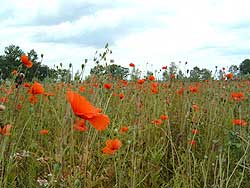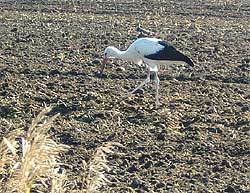












Glien has to thank the till masses of the Weichsel glacial period for its origin, the ground moraine Ländchen Glien plate accrued. Elb Slaws have lived in this area since the 7th century. They named their land after its clay soil. The name "Glien" derives from the Slavic word "glina" = Lehm (clay). Around the Glien one finds Luch - Land. The word "Luch" also stems from the Elbslavic and means "low-lying swamp". Until to he great Luch - soil enrichment from 1718 - 1720, which took place here by order of Frederick the Great, meadows and pastures were regularly under water for most of the year. The Slaws settled then on so-called Talsand - terraces. They built at suitable places refuges respectively ramparts to be protected from too much water. Dams were built between the settlements, which rise a bit above the Luch.

These still testify today - so between Spandau and Schönwalde - of the island character of the Glien. Probably in the 12th century German farmer settled in this area. The Slaws were driven in the time of Christianisation more and more towards the east. Even though livestock often perished due to the soggy land, grass couldn't grow properly or frequently one wasn't able to bring hey in from the pastures outside the frost periods, farmers knew how to make use of the land's characteristics during times of need. Some hostile man has been swallowed by the Luch. A myth even of a village gone under is entwined around the Teufelsbruch of Schönwalde. Life in the Luch wasn't easy and only the melioration regulated the water level and made a better life possible in this Ländchen.